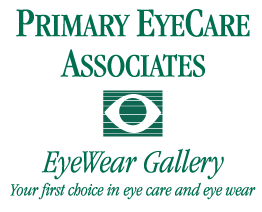Age-related vision difficulties and vision loss can be a challenge, but there are many solutions to help you cope and lessen the impact it can have on your daily life. Simple strategies from getting the right pair of glasses, to improving lighting, to purchasing some vision aids or magnifiers, can significantly help to compensate for reduced vision. Vision changes are normal with age yet it’s important to speak to your eye doctor so you know what to expect and ensure that the changes you are experiencing are normal and not a sign of a more serious eye or vision condition.
Normal age-related vision changes include reduced near vision (presbyopia), trouble seeing in dim light (due to the pupil shrinking and letting less light into the eye) and difficulty driving at night. Additionally, color vision and contrast sensitivity may be reduced. Most of these issues can be corrected with the right pair of eyeglasses to increase visual acuity and contrast and reduce glare. Improving lighting conditions within the home and office can also help. You may want to purchase some good portable lamps to brighten work spaces, especially when you are reading or performing fine motor skills such as typing, painting or sewing.
Cataracts is a common age-related condition in which vision is gradually reduced due to a clouding of the lens of the eye. When it begins to seriously affect vision, a surgical procedure to remove the lens and replace it with a clear artificial lens can be done. This procedure is extremely common and typically very successful in restoring vision.
Options for Permanent Vision Loss
Age related and other eye diseases such as glaucoma, age-related macular degeneration, and diabetic retinopathy can result in permanent vision loss or blind spots. This results in a condition called low vision, in which some vision remains, but the quality is compromised. This can be devastating for many people that are used to living independently but suddenly require a lot of assistance for daily living.
Thankfully, there are many products out there to help individuals with low vision manage daily tasks without assistance and the technology is always improving.
Some examples include:
- Hand held and stand magnifiers, some with lights included
- Large screen televisions and computer screens
- Phones and other devices with larger numbers or fonts
- Lenses and shields to reduce glare on screens
- Screen reader programs and wearable devices
The most important thing you can do to preserve your vision as you age is to schedule regular eye exams. Many vision-threatening diseases only begin to show symptoms when vision loss has already begun and may not be able to be restored. A thorough eye exam can detect early signs of disease and allow for treatment and preventative measures to reduce vision loss. As you begin to notice changes you should schedule regular exams to monitor your eyes and vision and to rule out any serious diseases that could cause irreparable vision loss.
